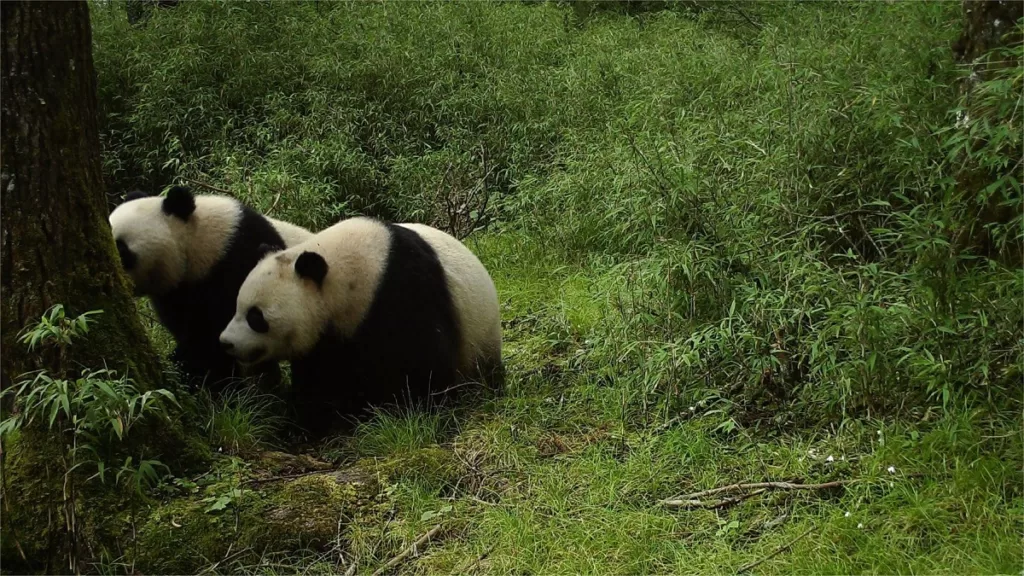The giant panda is a bear species that is native to China and is known for its distinctive black and white fur, round face, and chubby appearance. These beloved animals are beloved worldwide and have been the subject of numerous conservation efforts to help protect their habitat and ensure their survival.
The habitat of the giant panda is found primarily in the mountainous regions of southwestern China, specifically in the provinces of Sichuan, Shaanxi, and Gansu. The pandas live in dense bamboo forests at elevations between 5,000 and 10,000 feet (1,500 to 3,000 meters) above sea level, and they can be found in both temperate and subtropical forests.
Bamboo is the primary food source for the giant panda, and it makes up more than 99% of their diet. The pandas have evolved to eat bamboo almost exclusively, and they have developed a unique digestive system to help them break down the tough plant fibers. However, bamboo is not evenly distributed throughout their habitat, and the pandas must move between different bamboo stands to find enough food to survive.
Giant pandas are also dependent on water sources such as rivers and streams, which they use for drinking, bathing, and playing. They often live near water sources and will move to different areas depending on the season and availability of water.
In addition to bamboo and water, giant pandas also require adequate shelter and protection from the elements. They prefer areas with dense vegetation and will seek out shelter in hollow trees, caves, or rock crevices to rest and avoid extreme weather conditions. The pandas will also create dens by digging into the ground or using natural features such as fallen trees or rock piles.
The natural range of the giant panda has been reduced over time due to human encroachment, deforestation, and habitat fragmentation. As human populations continue to grow and expand, the habitat of the giant panda has become increasingly threatened, with many forests being cleared for agriculture and development.
Efforts are being made to conserve and restore the remaining panda habitats through protected areas and reforestation programs. The Chinese government has established a number of protected areas throughout the pandas’ range, including nature reserves, national parks, and wildlife sanctuaries. These areas provide habitat protection and management to help ensure the survival of the pandas and their ecosystem.
Reforestation programs have also been implemented to help restore damaged and degraded panda habitats. Bamboo is a fast-growing plant, and many areas have been replanted with bamboo forests to provide food and shelter for the pandas.
In addition to habitat conservation and restoration, efforts are also being made to address other threats to the giant pandas, such as poaching and human-wildlife conflict. Poaching for their fur and body parts has been a significant threat to the survival of the pandas, and laws and enforcement efforts have been implemented to combat this illegal trade.
Human-wildlife conflict can also be a problem when pandas move into areas near human settlements, leading to crop damage and other conflicts. Efforts are being made to address these issues through education and awareness programs, as well as by providing alternative livelihoods for local communities.
Overall, the habitat of the giant panda is critical to their survival, and efforts must continue to ensure that their habitat is protected and conserved for future generations. By working together, we can help ensure that these beloved animals continue to thrive in the wild.

